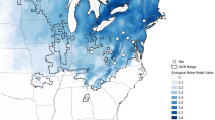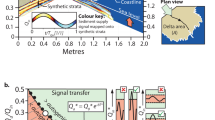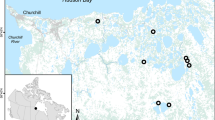Abstract
The network of roads on the landscape is vast, and has wide-reaching ecological influence. Recent investigations have focused on understanding impacts of contaminants from road runoff, especially deicing agents such as road salt. Despite growing research concerning ecological impacts of roads, our understanding of long-term consequences remains nascent. This stems in part from a dearth of investigations, and in part because ecological research typically ignores evolution on contemporary timescales. Yet reports of evolution influencing ecological outcomes are growing, suggesting this influence may be the rule rather than the exception. This may be especially true for species with spatially structured populations. For amphibians, such structuring coupled with environmental heterogeneity has been shown to yield contemporary evolutionary responses, with rates of divergence matching that of environmental disturbance. This suggests that amphibians dwelling in roadside wetlands may evolve rapidly as a consequence of novel selection pressures, such as runoff. I evaluated this potential response using a field-based reciprocal transplant experiment. I compared growth, survival, and development of embryonic and larval wood frogs originating from five roadside and five woodland wetlands. Concomitantly, I conducted chronic and acute road salt exposure experiments with wood frog embryos and larvae originating from the same suite of wetlands. Road salt and road adjacency negatively influenced wood frog growth, development, and survival. In the chronic exposure experiment, pre-metamorphic wood frog larvae reared in an ecologically relevant road salt solution were 13 % lighter in mass than larvae reared in a standard water solution. Further, the negative influence of road salt and road adjacency varied with respect to wetland origin type. Strikingly, wood frogs from roadside wetlands survived less than those from woodland wetlands. In the reciprocal transplant experiment, embryonic wood frogs originating from roadside wetlands survived on average 20% less than their woodland counterparts. Similarly, following acute exposure to road salt, roadside larval wood frogs survived 24% less than those larvae originating from woodland wetlands. These results suggest first that roadside wetlands are harsh environments for embryonic and larval wood frogs, and second, that populations of wood frogs are divergent across a road induced gradient. That roadside wood frog populations survive less and tolerate less road salt than woodland populations suggests that roadside wood frogs may be maladapted to their natal environment. These results pose questions about the mechanisms generating this divergent response, and indicate that roadside wetlands may induce sink dynamics coupled with inherited negative environmental effects.
Similar content being viewed by others
Article PDF
Author information
Authors and Affiliations
Corresponding author
Rights and permissions
About this article
Cite this article
Brady, S. Eco-evolutionary consequences of road adjacency and road salt on the wood frog, Rana sylvatica. Nat Prec (2009). https://doi.org/10.1038/npre.2009.3674.1
Received:
Accepted:
Published:
DOI: https://doi.org/10.1038/npre.2009.3674.1



